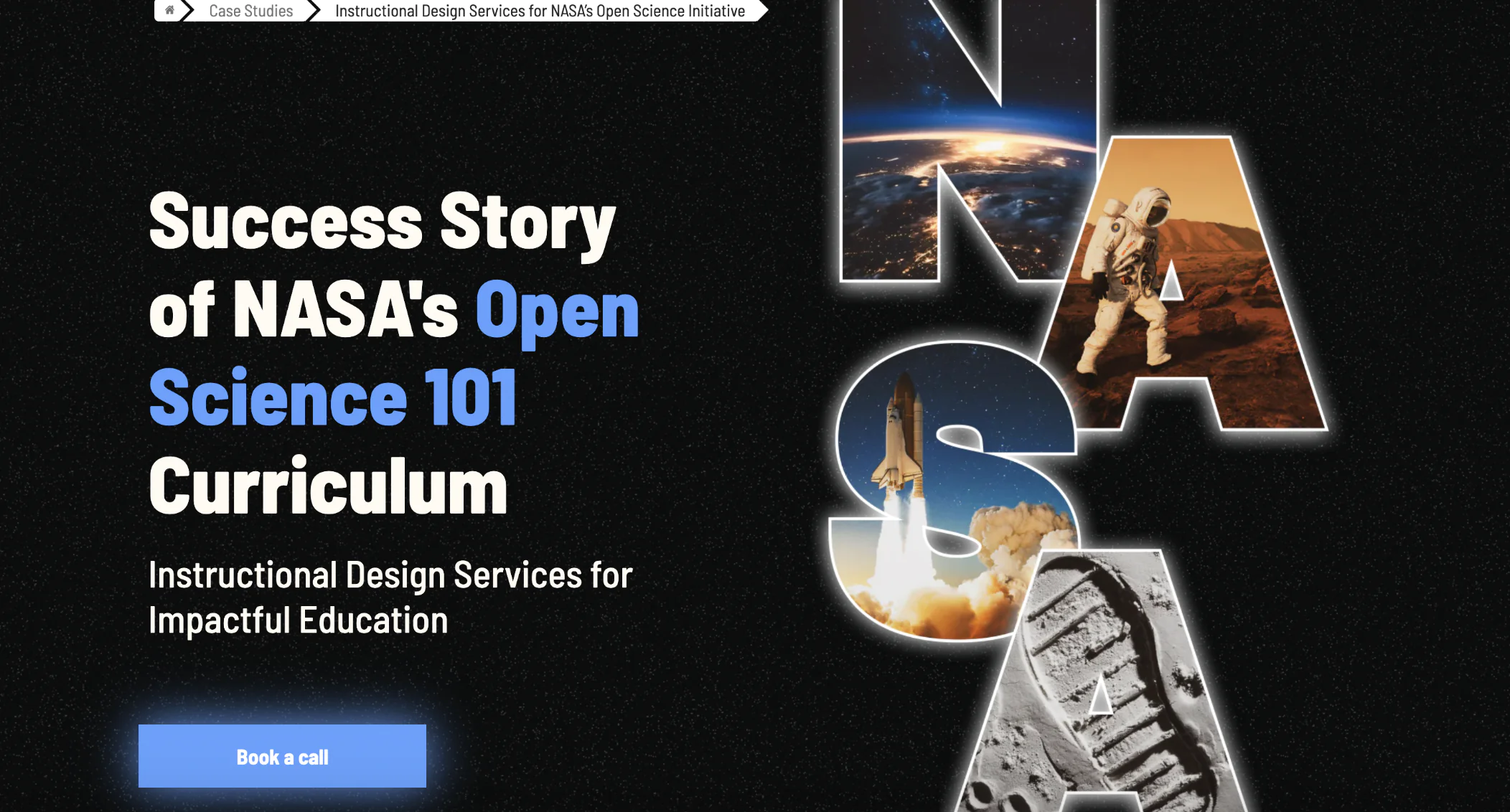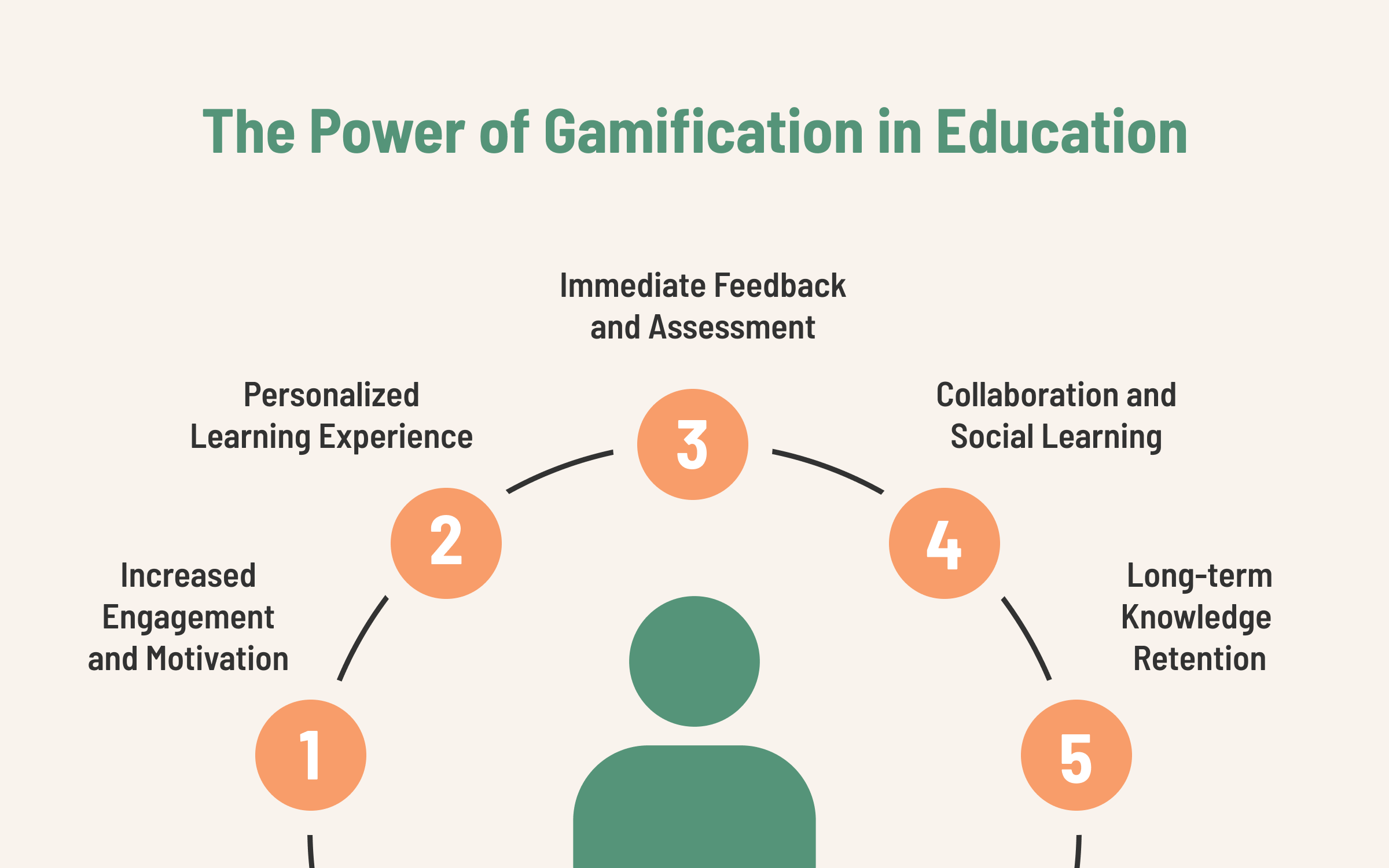In this article, we outline the top 8 most common mistakes in online course creation based on the extensive experience of our team at Raccoon Gang.
Being among the pioneers in the field of online learning course development, we don’t just develop Learning Management Systems. We build solutions that are innovative and qualitative and set entirely new standards — like we did in lots of projects, such as the Open Science 101 Curriculum for NASA.
Whether you are an experienced educator or just starting out, our insights will put you on the right track to create a course that really resonates with your audience and reaps its intended benefit. Without further ado, let’s explore the list of mistakes from the least to the most impacting, based on our experience.
Key takeaways
- Some of the most common mistakes when creating online courses include ignoring the research stage, not using gamification and interactive elements, and trying to make “one-size-fits-all” solutions instead of dividing courses into modules based on different skill levels of learners.
- Marketing is crucial for the successful launch of the course and getting the desired sales. If nobody knows about your course, nobody will buy it.
- Using professional help to create online courses from companies like Raccoon Gang can benefit you greatly and save you time.
1. Not Doing Your Homework
No matter how big an expert in your field you are, diving into online course development without proper research can lead to disappointing results. Before you get started, take the time to research best practices.
When people succeed in this area, they will likely share their experiences to exchange ideas and improve even further.
Understanding your audience, analyzing competitors, and structuring your content effectively are key steps to ensure your course stands out. Let us share with you a quick checklist on how to “do your homework” properly:
- Know your audience
- Analyze competitors
- Structure your content
- Review best practices
2. Not Getting Continuous Feedback From Students
Feedback is the lifeblood of any successful online course. Without it, you are flying blind, incapable of understanding if your course is serving up the needs and expectations of students. In fact, continuous feedback — whether it be a paid or free class — is the only real way to sharpen and fine-tune your content for the best learning environment.
While positive feedback might affirm your approach, the negative ones are usually more informative, as they point to things that need improvement. That is constructive criticism that would help you to realize the weaknesses that have been going on within your course and give clear guidance on what needs improvement. Negative feedback may feel harsh, but remember that it helps avoid a lot of mistakes when developing online training course sites.
Strategies for Collecting Feedback
- Piloting is always a good idea
Publishing a brief pilot course for pre-deployment testing by a group of students and continuously getting the maximum feedback from them is an invaluable tool of product improvement, as described in this great course from Michigan University, available at edx.org.
- Surveys and questionnaires
You can use surveys throughout your course, after major blocks of material, or at the end of the course. You will have specific questions about the clarity of content, level of engagement, and general assessments of the course.
- In-course feedback
Use quick polls, quizzes, or discussion forums within the course to gather real-time feedback from your community. This immediate input helps you address issues as they arise, rather than after the course is completed.
In addition, there is a trend to divide courses into small modules, so that people can invest time and money exactly into the skills they need and get the best results. Thus said, splitting a huge course into a bundle of smaller ones can help serving a much wider audience without actually losing the revenue.
Avoiding these mistakes greatly increases the chances of launching a successful and popular online course on any eLearning solution – but it does not guarantee the jackpot. Active collaboration with skilled course creators is recommended in order to ensure your efforts do not go in vain. We wish you the best of luck with creating your online courses!
3. Not Using the Gamification
Gamification is more than just a trendy term — it’s a powerful tool that can change your online course from a passive learning experience into an interactive journey. With Millennials now representing the largest population group in the U.S. (72.7 million and growing) and Gen Z quickly catching up, adding gamification into your course is a strategy you can’t afford to overlook. That’s why you can’t afford to make mistakes like missing out on gamified lessons when creating online courses.
Gamification taps into the natural human desire for achievement, competition, and recognition. Provide some mid-course challenges with badges for achievements, and deliver some competition (the best student of the week, the quickest homework completion, the best problem solution, etc.) so that the student is engaged and thrilled with new goals to compete for at any given moment.
4. Not Making a Bite-Sized Course
People nowadays have generally shorter attention spans and in the age of information overload delivering 45-minutes-long theoretical parts just doesn’t work anymore. This is described in detail in the recent study of information overload by Yunqi Zhang from China West Normal University.
In addition, many students consume online courses via mobile devices, meaning they can spare little time to listen to the theory (after all, it’s not an academy with 1,5h classes). Research shows that the optimal length of a video with a theory is 5–10 minutes, with 20 minutes being an absolute maximum. Such portions of theory can be consumed while commuting, having a snack, waiting for an ad break to end amidst the movie, or even while visiting a WC.
How to create bite-sized content:
- Break down complex topics. Instead of a 45-minute lecture, consider splitting it into several shorter videos, each focusing on a single concept or skill.
- Focus on one objective per lesson. This helps maintain focus and ensures that learners can easily absorb and apply the information.
- Utilize microlearning techniques. Incorporate quizzes, quick exercises, or flashcards within these short lessons to reinforce learning and keep students engaged.
- Optimize for mobile. This includes using responsive design and ensuring that videos and other media load quickly and smoothly.
5. Not Using Interactive Videos
One of the most popular mistakes to avoid when creating your online course is pretty basic — passive learning. Passive learning approaches, such as just watching pre-recorded videos, are no longer enough when it comes to digital learning today. As of today, adding interactive videos to your course raises the bar of learning and allows it to stay at high levels of engagement.
With interactive videos, passive content consumption is transformed into active learning; by allowing students to interact with the video itself, whether through quizzes, clickable choices, or embedded graphs, you are sustaining engagement and reinforcing understanding in real time. This dynamic approach helps students retain the information longer and stay focused throughout the course.
6. Not Diversifying the Testing Methods
Different learners have different strengths, and the one-size-fits-all kind of approach to assessment does not give an apt representation of the true abilities of the student. When you include different methods of testing, you can offer the student a more holistic kind of evaluation regarding knowledge and skill. It serves students with different learning styles and encourages active interaction with the learning material.
For example, solving a practical exercise in full is better than simply choosing a correct answer, etc. Here’s a short testing diversity checklist:
- Include practical exercises to apply it in the real world.
- Assess deeper understanding using short-answer questions.
- Include peer review assignments for collaborative learning.
- Provide project-based assessments that allow lump-sum assessment.
- Practice your skills with interactive simulations.
7. Not Defining the Skill of Course Participants
Being an expert in your field, you might think that those who hear your presentation share your knowledge level. This could not only cause major gaps in your course but also the content that is either too basic for seeking professionals or too advanced for starters. The beginners will be put off yet the advanced learners will feel like there is nothing to challenge them. Defining skill levels allows you to tailor your course content, ensuring that each student, regardless of their experience, gains value from your course.
How to do so?
There should be separate course modules with different difficulty levels so that you provide useful basics for newbies and in-depth hints for seasoned veterans. A pre-course questionnaire helps the students determine their knowledge level so that professionals can skip the modules they already know.
8. Not Positioning and Marketing Your Course Right
Building a high-quality course is only half the battle; the other half lies in how you position and market it. Without proper marketing and strategic positioning, even the most well-designed course can go unnoticed, leaving your efforts unrewarded.
Some course creators share their landing pages in online forums to ask people for their feedback. And if people responded with something like, “The page just isn’t beautiful,” they would argue with something like, “I don’t want it to be salesy, I am transparent and direct.”
While honesty is commendable, viewing marketing as some sort of a ‘bad’ thing is holding you back. You don’t need to over-promise or under-deliver but understand and apply marketing principles ethically to help show students why they should take your course.
The key to all this is learning basic marketing strategies, such as the ability to:
- Write benefit-focused titles and descriptions.
- Set the right expectations.
- Price your courses correctly.
If you do not know how to do these things, even a great course will not match your expectations; it will fall short of attracting a large enough audience and result in low conversion rates and the false assumption that your course isn’t viable.
Bonus Advice: Don’t Underprice Your Course!
We are finalizing our list with the last but not least of the mistakes online course sites make — failure to set the proper price for the course! Before determining the price for your course, consider the following:
1. Research the market
Look at the prices of courses offered by other providers with a similar level of authority (including both the institution and the presenter). Aim to stay close to the market average to remain competitive.
2. Evaluate presentation
Examine the introductory materials used by your competitors. Generally, the higher the price of a course, the more you should invest in teasers, course design, and marketing.
Additionally, there’s a growing trend of dividing courses into smaller modules. This approach allows learners to invest time and money specifically in the skills they need, leading to better results. By splitting a large course into a bundle of smaller ones, you can reach a broader audience without sacrificing revenue.
If you were wondering about the cost of online course creation, check out our article where we break it down in detail!
The Bottom Line
These pitfalls are to avoid to make sure you have the best chances of creating a successful and popular online course on whatever e-learning platform you may be using. However, the first step to understanding what mistakes online course creators make is to know them. To be really great, it’s very important to keep improving your content, be aware of the latest trends, and cooperate with skilled course creators.
Keep in mind, no matter how good you want it to be, it can be far away from your vision if you do not have the right expertise and guidance. If you are a first-time creator or you are looking to improve an existing course, working with professionals can ensure your efforts yield the desired results.
If you’re ready to take your online course to the next level, our team at Raccoon Gang is here to help. With years of experience in creating custom LMS solutions and e-learning content, we know exactly what it takes to avoid common mistakes and create courses and websites that engage, educate, and inspire. Contact us today to learn how we can support your journey to success.
We wish you the best of luck with creating your online courses!
FAQ
What Are the Most Common Mistakes Made when Creating Online Courses??
How Do I Keep Learners Engaged Throughout the Course?
What Role Does Course Marketing Play in the Success of an Online Course?
How Can I Avoid Underpricing or Overpricing My Course?
Why Should I Consider Working with Professional Course Creators?
What Should I Do If My Course Isn’t as Successful as I Hoped?
- 1. Not Doing Your Homework
- 2. Not Getting Continuous Feedback From Students
- 3. Not Using the Gamification
- 4. Not Making a Bite-Sized Course
- 5. Not Using Interactive Videos
- 6. Not Diversifying the Testing Methods
- 7. Not Defining the Skill of Course Participants
- 8. Not Positioning and Marketing Your Course Right
- Bonus Advice: Don’t Underprice Your Course!
- The Bottom Line





